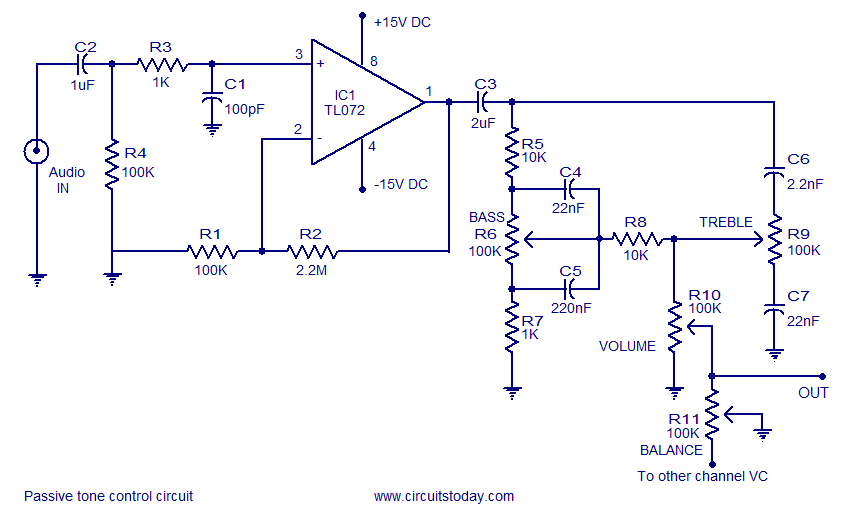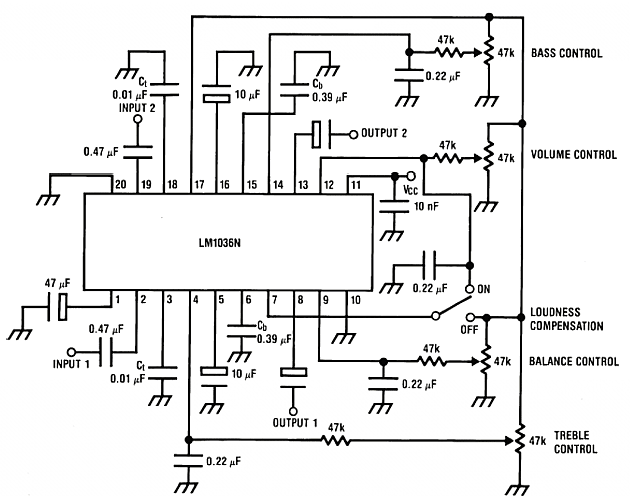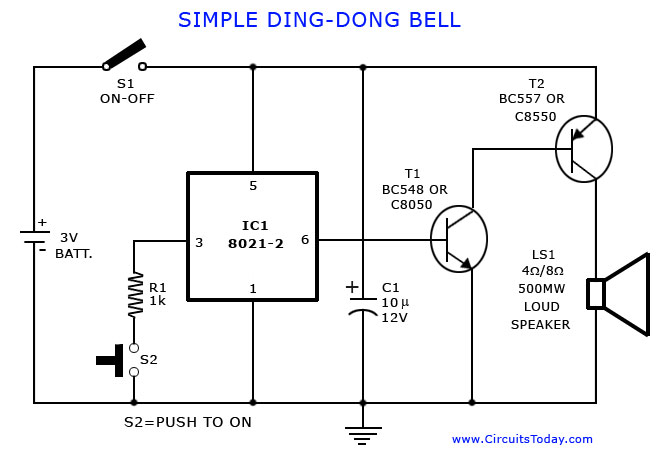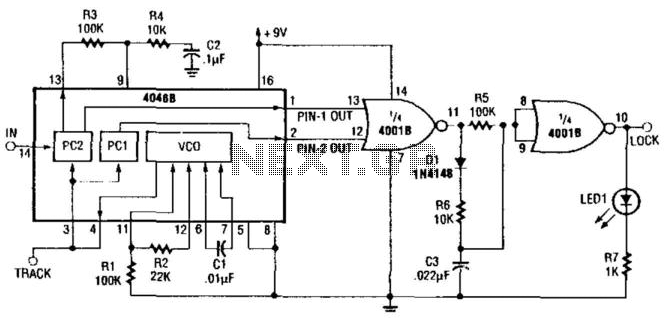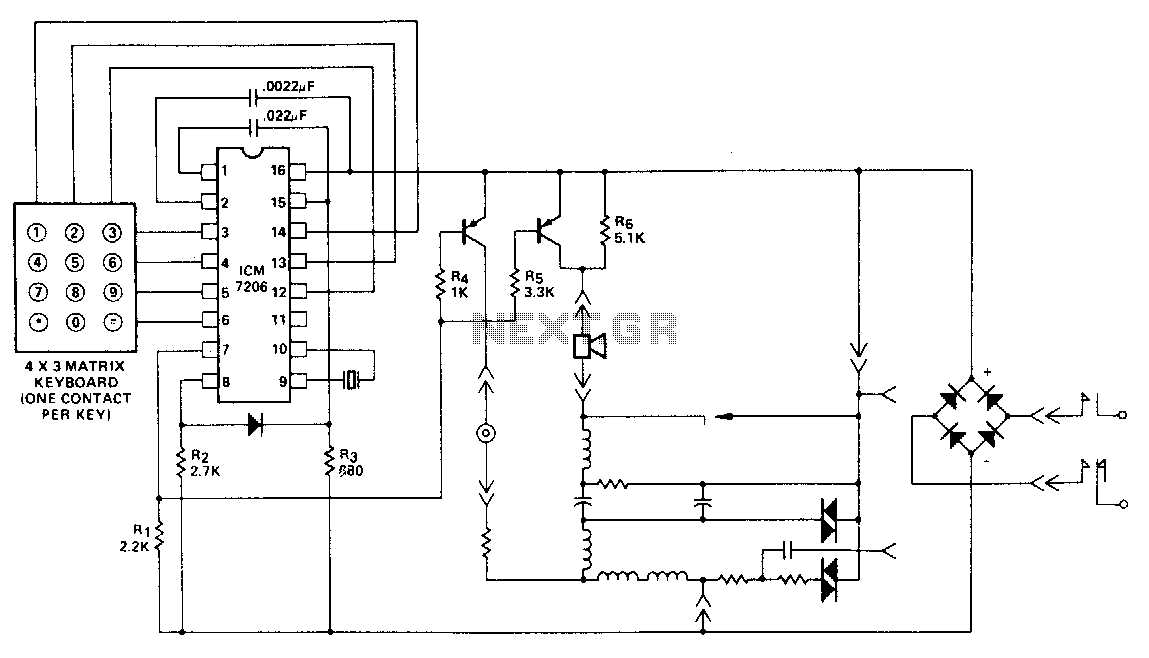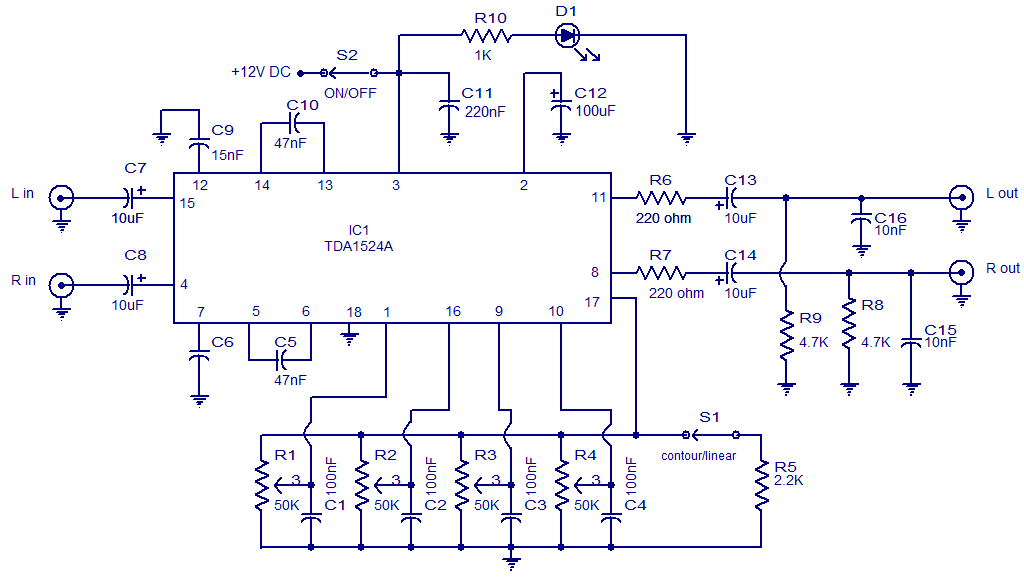
An Improved PL Tone Encoder
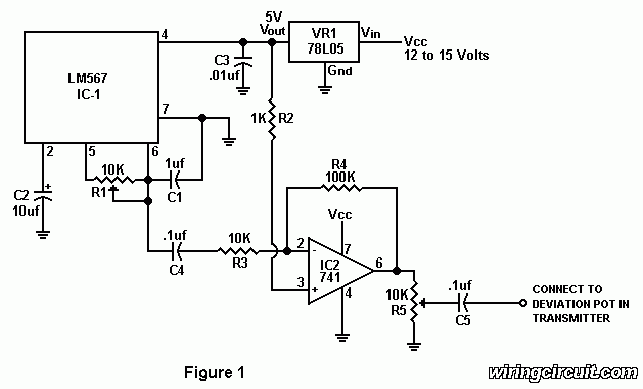
An improved PL tone encoder has garnered significant interest since the previous article on a PL tone board. Due to this interest, enhancements have been made to the original PL tone design. Figure 1 illustrates an economical PL tone generator.
The improved PL tone encoder circuit is designed to generate specific audio tones used in various communication systems, particularly in radio operations. The circuit utilizes a combination of resistors, capacitors, and integrated circuits to produce a precise frequency output. The design focuses on simplicity and cost-effectiveness, making it suitable for both hobbyists and professionals.
The core of the tone generator typically consists of a 555 timer IC configured in astable mode, which oscillates to create the desired tone frequency. The frequency can be adjusted by varying the values of the resistors and capacitors connected to the timer. For instance, using a potentiometer allows for fine-tuning of the output frequency, enabling the user to select the exact tone required for their application.
Additionally, the circuit may include a low-pass filter to smooth out the output signal, ensuring that the tone generated is clean and free from unwanted harmonics. This is crucial for maintaining the integrity of the signal in communication applications. The output can be connected to a modulator or directly to a transmitter, depending on the intended use.
Power supply considerations are also important; the circuit is designed to operate efficiently within a specified voltage range, typically from 5V to 15V, which allows for compatibility with various power sources. Furthermore, the physical layout of the circuit can be optimized for compactness, making it suitable for integration into portable devices or custom enclosures.
Overall, the improved PL tone encoder represents a significant advancement over previous designs, providing enhanced performance while maintaining affordability and ease of use.IMPROVED PL TONE ENCODER BY A significant amount of interesthas been generated since my last article on a PL tone board.Because of this interest I decided to improve on the old PL tonedesign. Figure 1 is an inexpensive PL tone generator wit.. 🔗 External reference
The improved PL tone encoder circuit is designed to generate specific audio tones used in various communication systems, particularly in radio operations. The circuit utilizes a combination of resistors, capacitors, and integrated circuits to produce a precise frequency output. The design focuses on simplicity and cost-effectiveness, making it suitable for both hobbyists and professionals.
The core of the tone generator typically consists of a 555 timer IC configured in astable mode, which oscillates to create the desired tone frequency. The frequency can be adjusted by varying the values of the resistors and capacitors connected to the timer. For instance, using a potentiometer allows for fine-tuning of the output frequency, enabling the user to select the exact tone required for their application.
Additionally, the circuit may include a low-pass filter to smooth out the output signal, ensuring that the tone generated is clean and free from unwanted harmonics. This is crucial for maintaining the integrity of the signal in communication applications. The output can be connected to a modulator or directly to a transmitter, depending on the intended use.
Power supply considerations are also important; the circuit is designed to operate efficiently within a specified voltage range, typically from 5V to 15V, which allows for compatibility with various power sources. Furthermore, the physical layout of the circuit can be optimized for compactness, making it suitable for integration into portable devices or custom enclosures.
Overall, the improved PL tone encoder represents a significant advancement over previous designs, providing enhanced performance while maintaining affordability and ease of use.IMPROVED PL TONE ENCODER BY A significant amount of interesthas been generated since my last article on a PL tone board.Because of this interest I decided to improve on the old PL tonedesign. Figure 1 is an inexpensive PL tone generator wit.. 🔗 External reference
